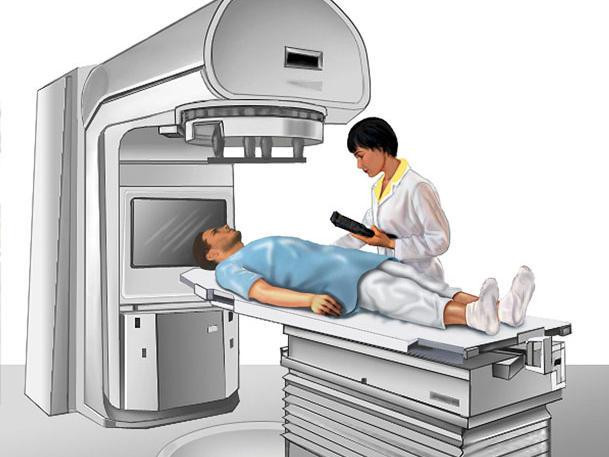Treatment plan and the type of cancer being treated. The following are the general stages involved in radiation therapy:
Consultation and Treatment Planning:
During the initial stage, you will meet with a radiation oncologist who will evaluate your medical history, perform a physical examination, and review your diagnostic tests (such as imaging scans and biopsies). The radiation oncologist will determine if radiation therapy is appropriate for you and discuss the potential benefits, risks, and side effects of the treatment. If Radiation Therapy is recommended, the oncologist will create a treatment plan tailored to your specific needs. This involves determining the dosage, frequency, and duration of radiation treatment.
Benefits:
- Allows the oncologist to evaluate the patient's condition and determine the most appropriate treatment plan.
- Ensures accurate targeting of cancer cells while minimizing radiation exposure to healthy tissues.
Simulation:
In the simulation stage, the radiation oncology team will carefully plan the delivery of radiation to target the cancerous area while minimizing exposure to healthy tissues. This process involves imaging techniques, such as CT scans or MRI, to precisely identify the tumor's location. Specialized immobilization devices or molds may be used to help you maintain the same position during treatment. These images and measurements will be used to design the treatment fields and calculate the appropriate radiation dosage.
Benefits:
- Provides an opportunity for patients to ask questions and gain a better understanding of the treatment process.
Treatment Plan Review:
Once the simulation is complete, the radiation oncology team will review and refine the treatment plan. They will use computer software and other tools to carefully determine the radiation dosage and shape of the treatment beams. The goal is to maximize the radiation dose to the tumor while minimizing exposure to healthy tissues and organs.
Benefits:
- Enables precise calculation and planning to maximize radiation dose to cancer cells while sparing surrounding healthy tissues.
- Allows for customization of treatment based on the individual's unique anatomy and tumor characteristics.
- Helps minimize potential side effects and optimize treatment outcomes.
Radiation Treatment:
During this stage, you will undergo the actual Radiation Therapy sessions. You will lie down on a treatment table in the same position determined during the simulation stage. The radiation therapist will position you and ensure that you are comfortable. They will then operate the radiation machine, which delivers the prescribed dose of radiation. The therapist will leave the room but will closely monitor you through cameras and intercoms. The treatment itself is painless and typically lasts only a few minutes. Most radiation therapy treatments are scheduled daily, Monday through Friday, over several weeks. The number of sessions and duration of treatment will depend on the type and stage of cancer.
Benefits:
- Directly targets cancer cells, damaging their DNA and inhibiting their ability to grow and divide.
- Offers a non-invasive approach, avoiding the need for surgery in certain cases.
- Allows patients to continue their daily activities during the treatment period.
Follow-up and Monitoring:
After completing the radiation therapy sessions, you will have regular follow-up appointments with your radiation oncologist to monitor your progress and assess any potential side effects. Imaging tests may be performed to evaluate the tumor's response to radiation treatment. The oncologist will also provide guidance on managing any side effects and address any concerns you may have.
Benefits:
- Enables early detection of potential side effects or complications, allowing for prompt intervention.
- Provides an opportunity for emotional support and guidance throughout the recovery process.
- Helps assess the effectiveness of the treatment and its impact on the cancer.
Conclusion:
At the end of this stage, the treatment plan is established, and the patient is prepared for subsequent radiation therapy sessions. At the conclusion of this stage, the treatment plan is finalized and ready for implementation. After completing all the prescribed radiation sessions, the patient moves on to the next stage. During this stage, the patient's progress is monitored, and any necessary interventions or support are provided.


